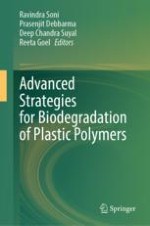2024 | OriginalPaper | Buchkapitel
16. Role of Microbial Enzymes and Their Modification for Plastic Biodegradation
verfasst von : Anand Vaishnav, Jham Lal, N. Sureshchandra Singh, Bikash Kumar Pati, Naresh Kumar Mehta, M. Bhargavi Priyadarshini
Erschienen in: Advanced Strategies for Biodegradation of Plastic Polymers
Verlag: Springer Nature Switzerland
Aktivieren Sie unsere intelligente Suche, um passende Fachinhalte oder Patente zu finden.
Wählen Sie Textabschnitte aus um mit Künstlicher Intelligenz passenden Patente zu finden. powered by
Markieren Sie Textabschnitte, um KI-gestützt weitere passende Inhalte zu finden. powered by
